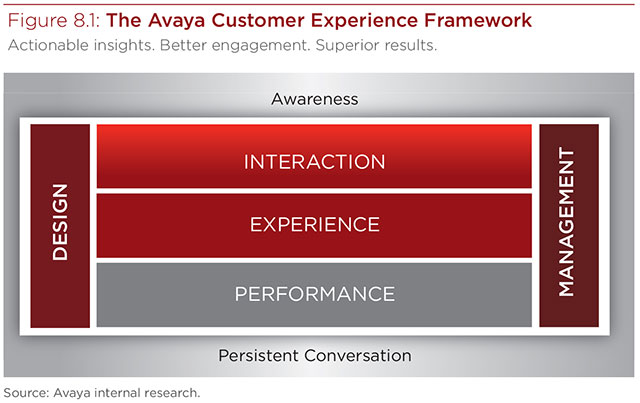
The truth of the matter is that customers don’t care how much a company spends to acquire them, and they’re not overly concerned with the company’s profitability as a whole—although loyal customers will certainly want the company to succeed. But they do care about how they’re treated and what experience they have with an organization.
The main tenet of customer experience management (CEM) is treating customer relationships as assets—because assets have value. The reason organizations invest in CEM is to drive competitive differentiation and increase customer lifetime value (CLV). CEM influences customer satisfaction, which drives loyalty, retention, and advocacy and ultimately enables growth and increased revenue. All of these facets are critical today, as barriers to entry are significantly reduced by the nonexistent boundaries the Internet provides. Competitors are no longer just around the corner; they are on the next continent and the one beyond.
CLV is about much more than maximizing profitability. It’s about maximizing customer profitability over the longest possible period; in other words, keeping customers longer and reducing overall churn in the base, ultimately reducing the cost per customer to your business. Improving efficiencies and reducing costs during the acquisition and support stages—and driving revenue and growth during the retention, loyalty, and advocacy stages—can increase the lifetime value of the customer relationship.

Obtaining customers, satisfying them by delivering a great customer experience, and keeping them happy are important to both CEM and CLV—and CEM and CLV are vital to the long-term health of an organization.
The Benefits of CEM Extend Beyond Customer Satisfaction
As illustrated throughout the previous chapters, the benefits of CEM are significant and far-reaching.
For the customer, the obvious benefit of CEM is an improved experience. Anytime, anywhere, over any channel; more personalized experiences; reduced waiting times and transfers; the right answer—the first time; and empowered, knowledgeable agents who work together to deliver a great experience for each customer.
For employees, CEM can mean an improved, more productive work environment, easy access to the right information and resources, collaboration opportunities, flexibility, empowerment, and variety in job duties. This translates into creation of a career path leading to higher staff retention, which translates into improved agent performance and lower acquisition and retention costs—which all play a role in CEM.
For the business, improved profitability, growth and revenue, lower costs, improved efficiencies, reduced staff turnover, and a differentiated brand are among the benefits of CLV improvements due to CEM. CEM can also affect market performance thanks to the improvements that result. Markets notice higher revenues, wallet share, and lower service costs that result from happier customers, and they award higher valuations to companies that deliver a phenomenal customer experience.
Companies with a laser focus on the customer experience appear to reap even greater rewards. According to Forrester Research, the stock price of companies ranked in the top 10 of its Customer Experience Index gained 22.5 percent between 2006 and 2010.
Meanwhile, the S&P 500 lost 1.3 percent over that five-year period.
Think Different
The transition to a customer experience-driven organization requires a different way of thinking. Below are a few tips to help you:
Experience what your customers experience. Call in to your contact center, navigate through your interactive voice response (IVR) menus, browse your website, email an inquiry, go to the store, use your mobile application. In other words, do what your customers do every day.
Know your customers. Whether through one-on-one interactions, surveys, focus groups, or data analysis, opportunities to get to know customers are plentiful. In order to succeed, companies need to know their customers and understand their needs, wants, values, and concerns.
Build relationships with your customers. Customers often value their relationships with an organization more than the product or service. Longer relationships translate into more revenue and higher customer loyalty and brand advocacy.
Take a holistic approach. It takes the entire company, from the top down, to create a customer-centric culture. Enabling this could mean changes to existing processes, procedures, structures, roles, staffing, and the like.
Build relationships within the organization. Not only do you need the support of other departments, building healthy internal relationships is good for everyone involved. In today’s environment, everyone in the organization should consider themselves an agent to the customer.
Collaborate, collaborate, collaborate. CEM goes beyond the contact center. To be successful, it’s important to engage all the appropriate teams in resolving customer queries; to share information, feedback, and ideas across the organization to improve the customer experience; to work together to improve processes, procedures, skill levels, and more.
Use technology wisely. Technology can enable terrific customer experiences, but it’s not the answer to everything. It is a tool that must be understood and used appropriately to facilitate positive experiences. Drive technology decisions based on customer expectations combined with contribution to shareholder value.
Align performance metrics with customer experience. Develop measurements that enable you to understand the impact of the customer experience on the overall CLV.
Keep learning and improving. CEM is an exciting, evolving field. You have the opportunity to improve the customer experience and improve customer lifetime value.
Create a CEM culture. Make your company known for customer experience. OWN IT.
Implementing CEM requires a fundamental shift throughout the organization. Though challenging, the future is CEM—and the future looks bright.
